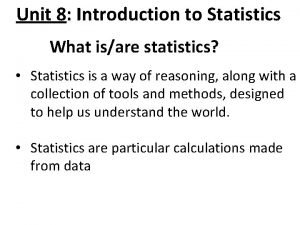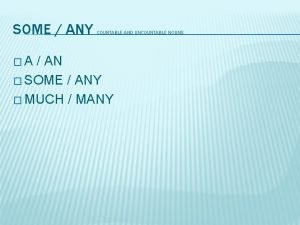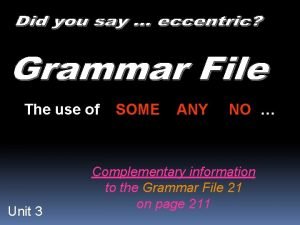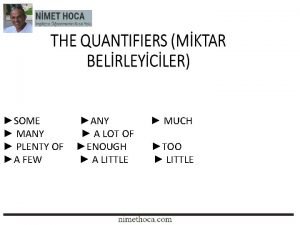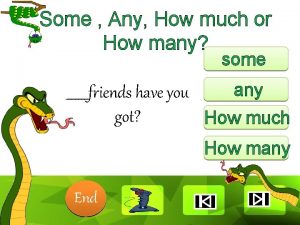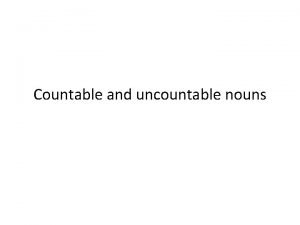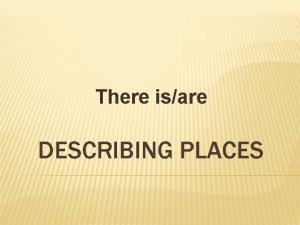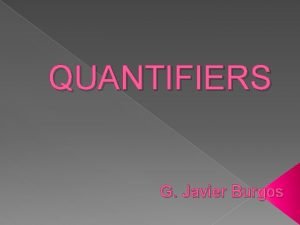QUANTIFIERS THERE ISARE SOME AND ANY HOW MUCH






- Slides: 6

QUANTIFIERS THERE IS/ARE , SOME AND ANY , HOW MUCH OR HOW MANY, …

THERE IS / ARE There is / are means “hay” in Spanish, and it is normally used in impersonal sentences. Example: There is a table in the room Affirmative form: There + is/are Negative form: There + isn’t / aren’t Interrogative form: Is /Are + there…?

THERE IS/ ARE • The use of this verb depends on the noun after this; if this is countable (singular n. , plural n. ) or uncountable. There is + countable –singular noun Example: There is a holepunch on that chair. There is + uncountable nouns Example: There isn’t water on the floor. There are + countable plural nouns Examples: Are there two printers on the desk?

SOME “Some” is used as a quantifier when we don’t refer to a specific quantity. The meaning is unos/as, algo. SOME + COUNTABLE PLURAL NOUNS + UNCOUNTABLE NOUNS Examples: There are some candles on the table There is some money on the floor NOTE: “Some” is only used in AFFIRMATIVE sentences.

ANY “Any” is also used as a quantifier for non- specific quatities. It means, nada, nigunos/as. ANY + COUNTABLE PLURAL NOUNS + UNCOUNTABLE NOUNS Examples: There aren’t any apples in the fridge Is there any milk at home? NOTE: “Any” is only used in NEGATIVE and INTERROGATIVE sentences.

HOW MUCH… / HOW MANY…? These two options are used, as it is obvious, in interrogative sentences. The translation in Spanish language is “¿Cuántos/as? ” How much + uncountable nouns Example: How much water is there in your bottle? How many + countable nouns Example: How many chairs are there in the classroom?
